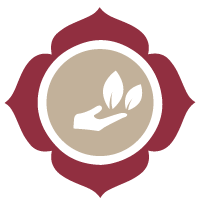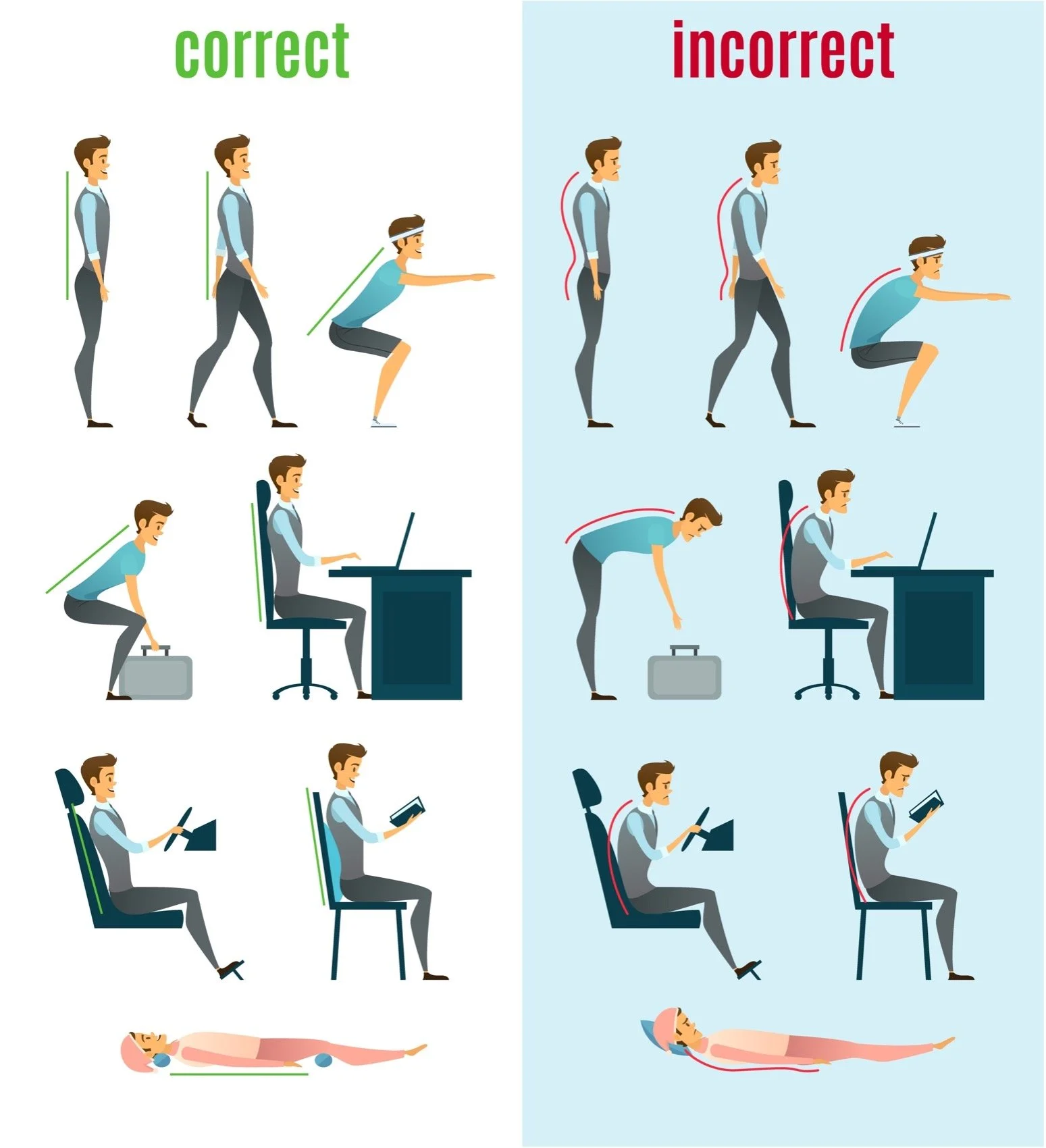An Ayurvedic Perspective On Pain and Posture
A 2021 study by the CDC estimates that over 20% of the US adult population experiences chronic pain in one form or another. Pain can affect mood and cause poor sleep, which only furthers the cycles that lead to pain. With so many of us living in bodies that are over-worked, over-stressed, over-stimulated and under-nourished, it can feel impossible to know how to manage our symptoms when there is a problem. If you’re looking for solutions that address the root causes, instead of medication that only provides temporary relief, we’d like to offer a different perspective.
Pain is the body’s way of asking for awareness.
Awareness check: If possible, please take a moment to pause, stand up and take 2-3 deep breaths in through your nose and out through the mouth. Bring your attention into your body and notice where there is any pain. What does the sensation feel like? Is there tightness? Tension? Do your muscles feel contracted? Do you notice any asymmetry in the way you are holding your body? Now, think about how you normally feel when you wake up. Do you feel rested? Are you stiff and sore, or have a hard time getting out of bed?
It may not seem like it, but one of the best things we can do to help relieve pain is to feel it. This embodiment practice gives us opportunities for understanding if there are causes such as our posture or other habits that are leading to imbalance in the body. Once we have this awareness, we can look for tools and practices to incorporate on a consistent basis, which will help lessen our existing pain as well as mitigate the effects of our specific tendencies so they don’t continue to cause as many problems in the future.
In Ayurveda, the Vata dosha is most often associated with pain. This dosha carries the qualities of dry, light, cool, rough, subtle, and mobile. Some of the habits that can aggravate Vata include erratic sleep, suppressing emotions, inconsistent routines, excessive caffeine intake, not drinking enough water and overeating or eating overprocessed/refined foods. Take a moment to reflect on which of these you feel you could begin improving. Later we’ll discuss some ways you can help bring Vata back into balance.
Another, often overlooked, aspect of pain are the repetitive ways we move and use our bodies and how it affects our posture. Everything our bodies do — sitting, walking, driving, sleeping, lifting/carrying, and our phone use contributes to whether our interconnected systems of bone, joint, muscle and fascia/connective tissue are staying in alignment or not. When one thing goes out of whack it can lead to a chain of imbalance, which is why awareness and prevention are so important. Something as simple as sitting on your wallet can cause issues. When you sit on your wallet, it throws your hips off kilter and creates problems in your hips and spine. The SI (sacro-iliac) joints are the two ”dimples” in your low back. They connect your sacrum (the base of your spine) to your hips. They are very prone to dysfunction when they are out of alignment. Switch to your front pocket or put into a handbag instead. Your body will thank you! Here are a few other tips for preventative posture practices:
Back sleeping (preferred)
Side sleeping (needs support)
Stomach sleeping (challenging)
Lifting
Some Ayurvedic principles and practices we can incorporate to reduce pain and inflammation are things such as yoga, massage, diet and relaxation practices.
Yoga
When we’re in pain, the last thing we may want to do is move, but staying sedentary will only make the problems worse. Where there is no movement, toxins accumulate and become harder to move through the body to eliminate. In Ayurveda, this build-up of toxins is called “ama” and leads to pain, tenderness, stiffness and swelling in the affected areas of the body. Even 10 minutes a day of gentle yoga poses and stretching will help get your blood, lymph and synovial fluid moving and working to decrease your toxic load. Mountain pose and anything that stretches the hip flexors will also help contribute to better posture. Open hips are happy hips!
Massage
“Abhyanga” is the Ayurvedic therapy of massage using warm oils. It is very grounding, helps relax and bring you back into your body, and tames vata. It also relieves joint and muscle stiffness, helps move toxins out of the body and increases circulation. It’s best to work with a licensed professional who is trained in these modalities and can tailor your session to suit your specific needs, but you can also begin a daily self-massage practice at home. We recommend using an oil such as sesame or Mahanarayan, as they are warming and help pacify Vata.
Diet
To help balance out the cool, dry qualities of excessive Vata we should incorporate warm, moist foods like soups and stews, root vegetables, winter squashes, and warm (not hot!) spices like turmeric and ginger. Avoid iced and cold drinks and limit caffeine intake. Drink warm, spicier teas, and plenty of room-temperature or warm water. Banyan Botanicals has a great video that goes into more detail here.
Relaxation
Beginning a routine of prioritizing time for relaxation every day can greatly improve health overall, but especially when it comes pain. The consistency helps ground and center you and becomes an anchor in your day to day life, which calms Vata, and the softening and releasing of joints and muscles helps with pain caused by tightness and tension. A few minutes a day of savasana (also know as “corpse pose”), meditation/visualization practices, or deep, restorative breathing can bring in a sense of ease and calm and provide the clarity necessary to remain aware and committed to creating better habits in the other areas of our life.
We hope that this has helped you on your path to healing and offered some useful insights that you can now carry with you going forward. Of course every person is unique, and working with an Ayurvedic practitioner can help create a plan that addresses your specific individual needs according to your constitution. This is not intended to be medical advice, so please always consult with your doctor or healthcare professional before incorporating any of the practices mentioned here.
If you’re interested in learning more about any of these topics, working with a practitioner, or product recommendations please reach out to us by phone, email, or any of our social media channels. Better yet, if you’re reading this on or before February 24, 2024 come hang out with us at our Open House! More details can be found here.





